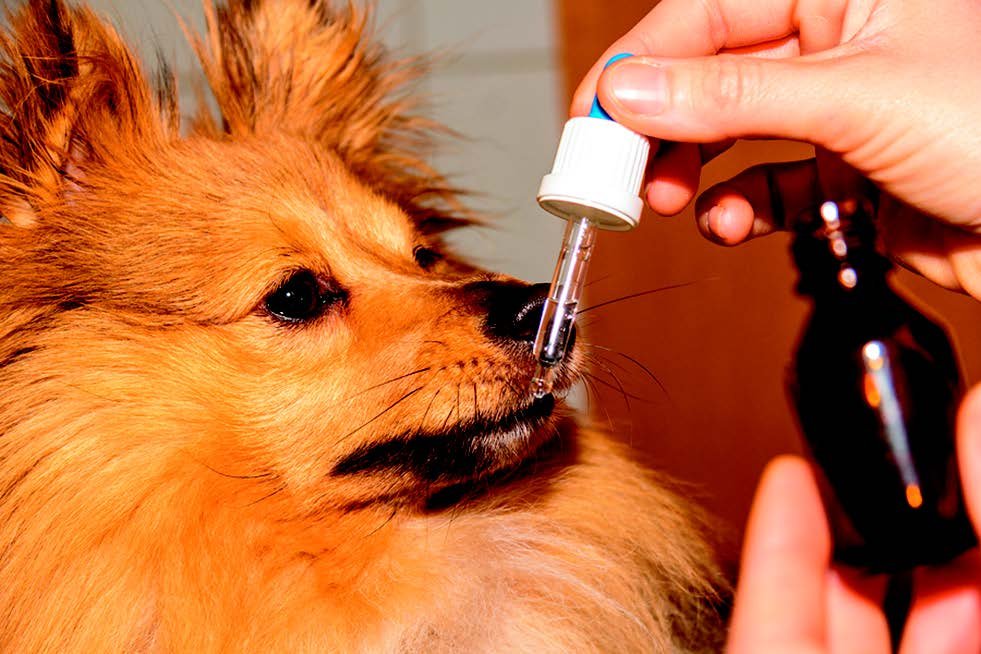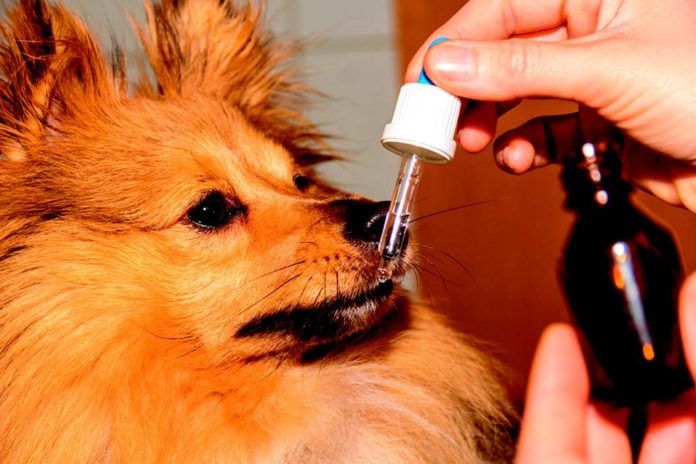
© huettenhoelscher | Bigstock
Did you know that you likely have a few medicines on hand that can actually be used for your pet? You’ll need to confer with your vet about dosages, but often what’s right for you may be right for your dog.
There are some obvious cautions. For instance, your particular pet may have health issues that could impact whether a drug that’s safe for dogs in general is safe for her. But you most probably have at least a few remedies on hand that can do double duty for you and Fido. Here’s a rundown.
Pepcid AC (famotidine). For dogs experiencing a bout of vomiting or other signs of stomach upset, famotidine can really calm things down. The dosage in this case most definitely depends on the dog’s weight, as well as on other drugs she might be taking and her health in general. Before you administer it, check with your pet’s doctor.
Triple antibiotic ointment. With a vet’s say-so, this remedy can be applied topically on a wound to inhibit bacterial growth and subsequent infection.
Hydrocortisone cream. Also applied topically, hydrocortisone cream can reduce itching caused by insect bites and allergies. But note that it’s more relief than cure. “It’s good for a once or twice application,” says Tufts emergency and critical care veterinarian Armelle de Laforcade. If the itching continues, you need to bring your dog to the doctor.
Artificial tears. Genteal, Sooth XP, and similar products calm minor eye irritations and help resolve mild conjunctivitis as well. They will not help if your dog has colored discharge (including the color white), extreme redness or swelling, or pain that causes her to keep winking or hold her eye closed. If that’s the case, take your pet to the doctor without delay.
Benadryl (diphenhydramine). As for people, this medication can help relieve itchiness. Proper dosing is critical. The standard dose for Benadryl taken orally is 1 milligram per pound of body weight, three times daily. As the standard tablet in many pharmacies is 25 milligrams, that makes it just right for a 25-pound dog. A 50-pound dog will need two pills at a time, a 12.5-pound dog, half a pill.
Zyrtec (cetirizine). Here’s yet another drug that’s all about relieving itchiness, often from a skin condition called dermatitis. It’s often a fallback if Benadryl doesn’t do the trick.
Styptic pencil or powder. We talked last month about using a styptic pencil to stem the bleeding if you cut your dog’s nail too close to the quick while grooming. It won’t always work, but it’s worth a try. You might have it on hand, anyway, in case you nick yourself shaving.
Hydrogen peroxide. (10 percent strength, available over the counter) This solution can induce vomiting in case your dog has swallowed something poisonous. Your vet or the ASPCA’s Animal Poison Control Center (888-426-4435) can tell you the proper dose. But be aware that inducing vomiting is not always the right thing to do; in some cases it can make the poisoning worse, depending on the toxin. This is one you most definitely need outside help with so you make sure you “first do no harm.”
Antifungal products. A dog with a superficial fungal infection can be kept comfortable until her doctor’s visit if you apply an anti-fungal spray, gel, or cream that contains miconazole. If the case isn’t complicated, the medicine may even clear up the infection.





